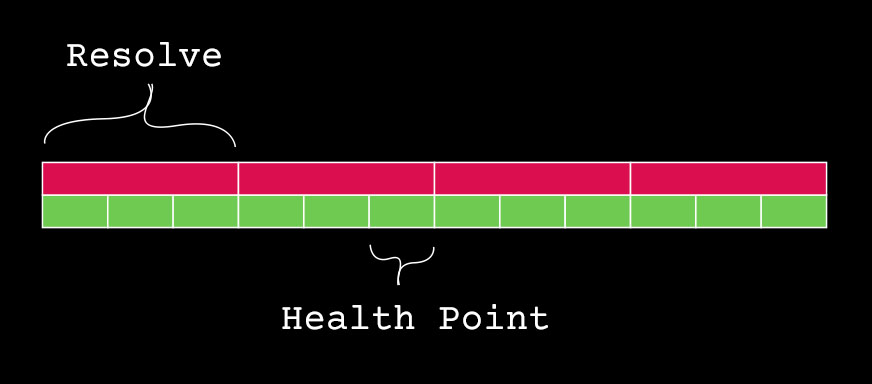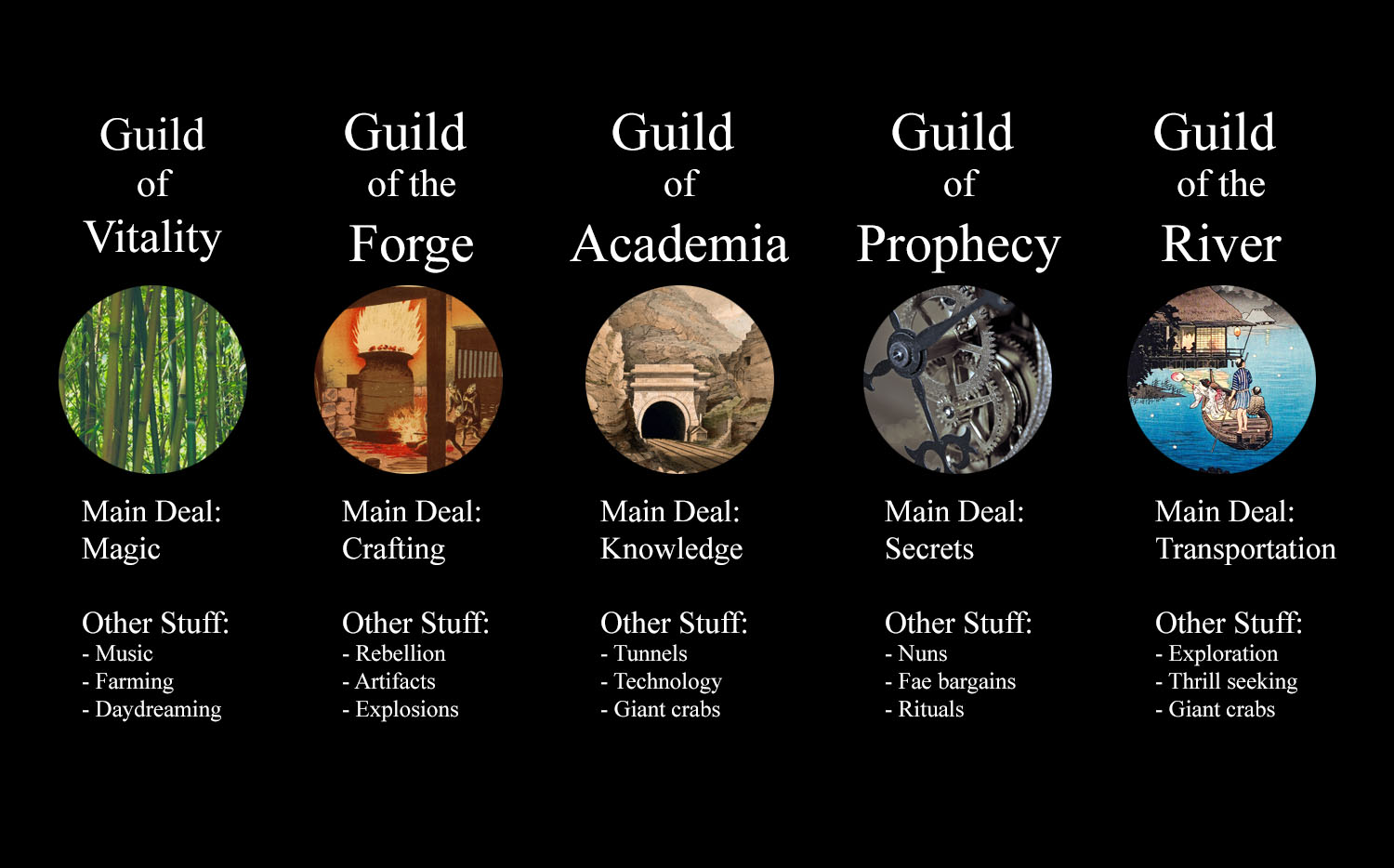After last week’s double-post with the blogclave, I definitely cut it close finishing my post for this week. It’s still technically my Saturday night as far as I’m concerned, timezone be damned.
This week we’re continuing the deep dive into Fighters in The Serket Hack, picking right back up with how attacks work in the system.
Anatomy of Attack, Continued
The other half of dealing damage is taking it. This isn’t new technology: we’ve all seen a hit point bar before, but I’m specifically inspired by how Lancer handles it:

Normal health is meant to be easily lost and easily replaced. After combat, health restores to its maximum capacity. Resolve is the measure of long-term fighting strength: when your health reaches 0, you lose 1 point of resolve and set health back to its maximum value. Then you roll on a “depthcrawl” — a weighted table which gets worse the more missing resolve you have. On the “good” end of the table, you take a glancing blow and deal with a temporary debuff. As the results get worse, you start receiving long-term injuries and are potentially taken out of the fight entirely.
Some of the details here are fuzzy because I don’t know what conditions and statuses I want to put in the game, but I do know that I want to limit the amount of long-term consequences. Combat should not be a means of attrition for the party; if anything, combat should empower the party over time. To that end, long-term injuries and resolve are intended to be heal-able through abilities and resource expenditure, and completely restored when players return to a sanctuary.
Foundational Recap
Just in case anyone’s lost in the sauce by now, here’s what we’ve established:
- Combat takes place on an abstract battlefield with each side having a frontline and a backline
- Attacks roll 3d6 and compare the total against two target values to determine which dice is used for damage.
- Players have health points and resolve. They take temporary / “soft” damage against their health first, and then long-term / “hard” damage against resolve.
Attacks and health are inherent to Fighters, and since all other classes inherit from Fighters, those mechanics are inherent to all classes. However, some classes twist those mechanics or substitute different rules entirely. For example, the Adventurer uses a d20 to attack instead of 3d6, but still compares their rolls to the two defense targets. The Fool can’t die unless it’s funny.
Fighter Identity
“If the Fighter is the foundational class, then what aspects are unique?”
Conceptually, almost all the other classes have a strong identity that immediately separates them from the Fighter. The Vanguard, Paladin, and Knight are the closest to the Fighter upon first glance but have different internal mechanics to separate them. Paladins are strongly connected to “tanking” and have abilities centered around providing defense for the party. Knights are designed to operate in tandem with their Squires and rarely use magic. Vanguards take the idea of a Fighter and narrow it to mastery over a single weapon, specializing in combat styles like counterattacks.
By contrast, Fighters strive to attain proficiency in a variety of weapons in order to adapt to any circumstance, and often switch weapons mid-battle as part of a combat maneuver. A Fighter might throw an axe to flinch an enemy before pulling out a bow to finish them off. Another classic technique is the art of weapon combos; borrowing the example from the previous post in the series:
- The Fighter attacks an enemy, rolling [1, 5, 4] against a defense of [9, 12].
- Rather than dealing Mid (4) weapon damage, the Fighter chooses to strike Low dealing 1 damage.
- This triggers a weapon combo for the Fighter, allowing them to immediately make another attack against the same enemy. In this case, weapon skill in question gives 1 Advantage on combo attacks, allowing them to roll four dice and select the highest 3.
The Fighter rolls [1, 5, 2, 6] for a total of 13. They once again forego the high hit to deal Mid (5) weapon damage and make a third combo attack. - For the third and final combo attack, the Fighter rolls [3, 4, 6, 1] for a total of 13 again. In addition to dealing High (6) damage, the weapon skill also heals the Fighter for Low (3) damage.
In total, the Fighter dealt 12 damage and healed for 3 in a single combo attack. Different weapons have different combos, and some are easier to achieve than others. One of the techniques that Fighters seek to master is the ability to chain combos between weapon types; this allows them to take advantage of more reliable skills and use them to build towards riskier payoffs.
Lore Be Upon Ye
I think I’ve used the word “clan” in a couple places when talking about Fighter lore but the more I thought about it, the more I didn’t like where that word takes me. That road leads to bioessentialism and having Fighters sorted based on inherent characteristics rather than personal choice. Fuck that. Here’s the new thing:

I definitely want guilds in my fantasy game and this seems like a good place to stick them. They correspond to the five elements of crafting and reinforce the concept as a fundamental nature of the universe. I’ve got some lore ideas for each of the guilds but there’s probably enough to talk about them in their own post.
The main thing is this: among Fighters, there are strong and thriving communities for you to engage in and be supported by.
With this post, our deep dive into Fighters is complete — at least for now. We established the basics of combat, attacking and taking harm, and looked at what makes the Fighter a unique class in The Serket Hack. I look forward to building out more classes in future entries.
